

Stormwater management at landfills is changing as owners/operators are adapting their operating plans and designs to minimize the risks that come with heavier rainfall, and severe storm conditions. Landfill engineers are “overdesigning,” in regions hard hit in recent years by severe weather, and not designing for what is labeled as a statistically probable 25-year-storm.
Operations and maintenance are also preparing for changing conditions. William Mojica, Republic Services Director of Environmental Compliance is quoted in this article saying “It’s understanding the facility’s lifecycle, what best management practices (BMPs) are required and anticipating what may come.”
Jonathan Meronek, of SCS Engineers, notes similar strategies are being explored or employed along the U.S. coastlines including designing retention facilities to handle much larger storms.
With the number of LFG monitoring technologies out there, it can be difficult for operators to distinguish which is the best fit. The authors, Pat Sullivan and John Henkelman of Understanding Landfill Gas Monitoring Techniques, do just that, help readers find the approach that works best for their landfill monitoring needs.
Methane can be monitored above the surface of the landfill as a gauge of potential emissions or can be directly measured using techniques that test for the rate or flux of emissions. The above-surface monitoring techniques for gauging potential emissions include surface emission monitoring, ground-based or low-altitude imaging and satellite and aerial imaging.
Landfill methane measurement is the direct measurement of methane emissions from landfills. Direct measurement of methane is more expensive than surface emission monitoring. Four ways to measure landfill methane directly are flux chamber testing, plume measurement, micrometeorological methods, and dispersion modeling.
An aggressive carbon abatement goal often referred to as deep decarbonization, requires systemic changes to the energy economy. The scale and complexity of these projects are enormous, but achievable in our children’s lifetime. Legal Pathways recently published a legal toolkit Legal Pathways to Deep Decarbonization in the United States containing key recommendations and information from its larger publication to be released later this year. Both are a treasure trove for public and private decision-makers who desire pathways to a smaller carbon footprint.
The slimmer version works as a legal guide for businesses and municipalities interested in reducing greenhouse gas (GHG) emissions in the U.S. While each entity may draw on some, but not all, of the publication, it is a significant resource for public and private decision-makers who desire, or are working toward meeting stricter regulatory policies.
The authors identify all the legal options for enabling the U.S. to start addressing a monumental environmental challenge. Decision-makers can use combinations of resources to achieve their desired goals by employing these legal tools.
Thirty-four chapters cover energy efficiency, conservation, and fuel switching; electricity decarbonization; fuel decarbonization; carbon capture and negative emissions; non-carbon dioxide climate pollutants, and a variety of crosscutting issues.1 Each topic area identifies the main legal issues; then covers the options involving federal, state, and local laws.
With enough detail for readers to comprehend pathways best suited for them, the book is written for those who do not have legal or environmental engineering backgrounds. The authors include options even if they are not politically realistic now, recognizing that some may have value over time by becoming a legal pathway.
Get started by downloading this informative Environmental Law Institute publication.
Notes and Citations
1 “Legal Pathways to Deep Decarbonization in the United States,” by M. Gerrard and J. Dernbach, Editors, 2019, Retrieved from https://www.eli.org/eli-press-books/legal-pathways-deep-decarbonization-united-states
Learn how four municipalities are finding ways to lower their operational costs to balance the rising cost of recycling.
Three distinguished recycling experts describe how cities from Kirkland, Washington to Oklahoma City to Virginia Beach and Chesapeake have taken action to lower their operational costs, offsetting the cost of recycling. Each city takes a slightly different approach, but all are using the same strategies to balance the books successfully and sustainably.

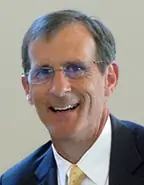

APWA Click-Listen-Learn event details and registration – March 14
11:00 am Eastern | 10:00 am Central | 9:00 am Mountain | 8:00 am Pacific
Participants will learn:
Participants may earn CEU credit for attending during the Test Your Knowledge portion of the program evaluation.
APWA encourages group participation and follows up as part of their program to Continue the Conversation promoting a deeper understanding of how these solutions relate directly to your responsibilities, agency or department, and city.
Free to all APWA Members | Fee for others is $99
The purpose of the Quaternary Geology of Calumet and Manitowoc Counties, Wisconsin report is to provide an interpretation of the distribution and history of glacial deposits and a map showing their distribution.
This report should be useful for planning and development agencies in making land-use decisions, and to the non-metallic mining industry to aid in locating potential sources of aggregate.
The stratigraphic framework presented provides a basis for future detailed groundwater studies in the area. Finally, we hope that naturalists and others interested in the geologic history of the land on which we live will enjoy reading this report.
The report is available for sharing and downloading from the Wisconsin Geological & Natural History Survey.
We hope you find it both interesting and valuable. For geological surveys and information in other states, please contact us.
As a national environmental consulting and contracting firm specializing in managing hazardous substances, SCS Engineers is helping our clients now. Start by reading The Environmental Dangers of PFAS and Technologies for Removing Them, published in WasteAdvantage magazine for use in the solid waste industry and other industrial applications in support of EPA’s Action Plan.
On February 14, 2019, the U.S. Environmental Protection Agency (EPA) Acting Administrator Andrew Wheeler announced EPA’s Per- and Polyfluoroalkyl Substances (PFAS) Action Plan. The PFAS Action Plan is in response to public interest and input the EPA has received over the past year. EPA’s Action Plan identifies both short-term solutions for addressing these chemicals and long-term strategies for states, tribes, and local communities need to provide clean and safe drinking water to their residents and to address PFAS at the source. These actions include:
Contact a local SCS professional at or visit our website.
… we will certainly work toward making a smoother, more resilient project experience for you. Here’s one reason why:
To anyone experienced with siting new utility infrastructure that environmental planning and permitting is often a complex undertaking. Shane Latimer’s article provides guidance to help smooth the process and keep your project on time and on budget.
Project permitting, especially for linear infrastructure, generally requires planning at federal, state, and local levels, often spanning multiple jurisdictions. Integrating all of the planning and permitting processes of each level, and each community, into a cohesive plan, is crucial in managing budgets and timelines and, most important, stakeholder expectations. Changing regulations or government agencies may further complicate the process, because they do not have specific permitting timeframes or their decisions are subject to legal challenges.
In his article, Shane discusses the current general environmental regulatory context, followed by an integrated approach to permitting we use, which consists of three main pillars:
Along the way, he shares the typical pitfalls that often befall project managers that may not be well-versed in environmental permitting. Lastly, Shane lists the top permitting issues that seem to be challenging practitioners most. These elements in your earliest project development may not allow you to foresee every problem, but it will certainly make for a smoother, more resilient project experience.
Here’s another reason, we are driven by client success!
I’d like to read Integrated Environmental Planning and Permitting Enables Project Success

About the Author: Dr. Shane Latimer, CSE, is an ecologist and an environmental planner with over 20 years’ experience in environmental assessment, planning and permitting. He specializes in SCS Engineer’s client projects that are often large, complex, or controversial, and involve a combination of land use, environmental permitting, and other constraints.
Stormwater Regulation is evolving, pushing more responsibility on to the dischargers by holding them accountable through categorization based on a discharger’s ability to meet numeric benchmarks. Additionally, how a discharger responds and applies effective BMPs determines their status. Ultimately, it is up to the industrial permittee to take the initiative, with an eye to priorities and feasibility for the future of their stormwater compliance program.
Stormwater managers and facility compliance personnel have only just begun to come to terms with the tiered ERA Response paradigm. However, as the tiered escalation becomes more common and ERA Level 1 and Level 2 reporting is performed, facilities are beginning to reach an equilibrium of stormwater compliance in terms of strategy, feasibility, budget and allocation of resources.
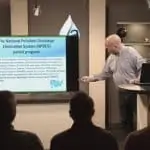
In his whitepaper, Jonathan Meronek, QISP, ToR, takes readers through the fundamental components of the ERA, Exceedance Response Action, or tiered Corrective Action compliance mechanism already in place, and currently being implemented in the States of California, Washington and the most recent General Permit in Oregon. ERA has wide-reaching implications for future NPDES permittees of industrial stormwater discharges. The escalation or “tiered” response standards is based on EPA Benchmark Levels and potential for future Numeric Effluent Limits (NELs). The three western states are viewed as “precursors” of what may be expected throughout the United States, as several key components of the forthcoming Multi-Sector General Permit (MSGP) will push other states to move towards similar ERA response scenarios and regulations.
Regulatory and siting restrictions are such that many solid waste operators prefer to expand their existing landfill footprint as much as possible instead of finding a new disposal footprint at a different location. As landfills are getting larger in height and greater in footprint area, the location of leachate tanks, leachate ponds, or discharge points to an on-site or off-site leachate treatment plant usually does not change. A larger footprint means leachate force mains are getting longer forcing the existing pumps to work harder to push leachate through the system to a target point. Some operators carry on with the same pumps for decades and do not monitor the performance of the pumps after expanding the landfill footprint, which could be more costly in the long-term.
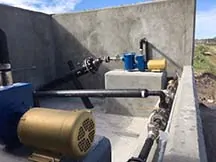
Hydraulic Evaluations for Lateral Expansion
The longer leachate force main with possibly additional bends in the line increases friction in the line and causes flow rates to reduce to unexpected levels. We recommended that landfill operators evaluate the performance of the existing pumps along with new pumps when designing a lateral expansion. Such an evaluation may require hydraulic analysis of the entire network of pipes along with pumps, or only the segment of the network affected by the expansion. However, the effort is minimal in comparison to the operating costs of inefficient flow and overtaxing the equipment.
Sometimes the results of a hydraulic evaluation may require up-sizing all or specific pumps in leachate sumps because not enough flow can go through the force main due to high friction loss in the expanded leachate force main. Up-sizing pumps may be achievable depending on the type of the leachate sump, i.e., riser system or vertical manholes. If the up-sized pump in a riser system is too long to fit inside a riser system, or so long that it makes routine maintenance too cumbersome, your engineer may consider enhancing the functionality of the design.
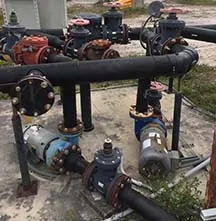
Inline and Offline Pumps
Booster pumps located along an expanded leachate force main can certainly be an option. Booster pumps can be the inline or offline type. Install the inline pumps on the actual force main, and position the offline type on the side so that liquids go through bends and elbows to reach the pump, and again through bends and elbows to get back in the force main. In either case, the booster pump adds hydraulic energy to the flow inside the force main to push the liquids at a compensated pressure through the remainder of the force main and to the target point.
Operators need to be aware of the dynamic nature of the leachate piping network and the role of booster pumps in the dynamic environment. Changes to the flow in the force main may change following a landfill expansion when the new cells are coming online increasing leachate generation. Alternatively, after closing portions of the landfill slopes, that decreases leachate generation over time. Sometimes booster pumps have to be up-sized or downsized depending on the flow and pressure in the system.
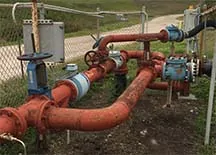
Optimizing Performance, Reduce O&M Costs
The cost of replacing pumps, up-sizing, or downsizing, is insignificant compared to the revenue that landfills generate. Proper adjustment of the pumping system keeps the entire network operating at the appropriate range of pressure, and velocity in the line; increasing the life of the pumping system. Less wear and tear on the system produces a reduction in maintenance costs along with less equipment downtime.
Lower maintenance requirements may also reduce the number of personnel required to keep the system in operational condition. Landfills with a large pumping system employing a second technician because of the high maintenance of multiple pumps may find a single technician sufficient for the upkeep of the system. Proper sizing of pumps and operating the pumping system as designed within the evaluation parameters can significantly reduce the cost and frequency of pump maintenance.

Landfill Engineering and Leachate Management
SCS Engineers promotes Carlo Lebron to lead the Southeastern region operations, including all environmental consulting, landfill, landfill gas, and solid waste business. He commences his responsibilities immediately, under the title Business Unit Director, and is managing the staff and business operations of six offices in Florida and Georgia, and including projects in Puerto Rico. His primary office is located in Tampa, Florida.